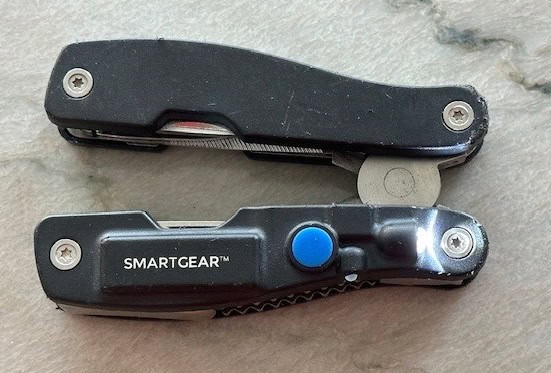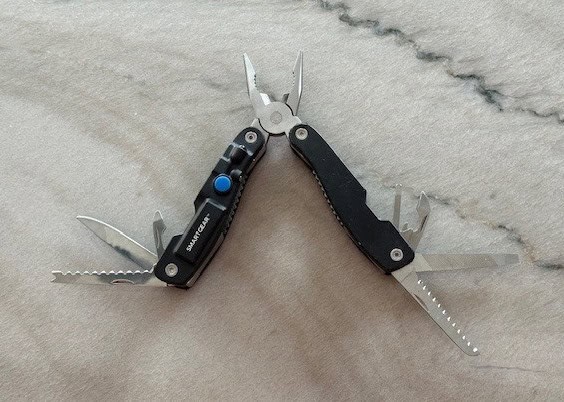A multi-tool is a versatile hand tool designed to perform a wide variety of functions, making it a must-have for DIY enthusiasts, professionals, and outdoor adventurers. Typically, a multi-tool includes a range of built-in tools such as pliers, knives, screwdrivers, and saws, all conveniently housed in a single, compact device. Its all-in-one design allows users to tackle multiple tasks without needing to carry a full toolbox, making it ideal for situations where space and weight are considerations.
History of the Multi-Tool
The concept of the multi-tool dates back to ancient times, with early examples like the Roman folding knife, which combined a blade, spoon, and other eating utensils. However, the modern multi-tool, as we know it, was popularized by Tim Leatherman in the 1980s. After traveling through Europe and experiencing the inconvenience of carrying various tools, Leatherman designed the first Leatherman tool, which featured pliers, a knife, and other essential tools. This innovation led to the widespread adoption of multi-tools, making them a staple in both professional and recreational toolkits.
Types of Multi-Tools
- Pocket Multi-Tools: Compact and portable, these tools are small enough to fit in a pocket, often featuring basic tools like knives, pliers, and screwdrivers.
- Keychain Multi-Tools: Even smaller and lighter, these are designed to be attached to a keyring and typically include essentials like a small blade, file, and bottle opener.
- Specialized Multi-Tools: Designed for specific tasks or professions, such as electricians, cyclists, or military personnel, these tools include specialized implements tailored to their needs.
- Full-Sized Multi-Tools: Larger and more robust, these tools are packed with a broader range of functions, ideal for heavy-duty tasks.
- Credit Card Multi-Tools: Slim and minimalist, these tools are designed to fit in a wallet and include basic tools like a knife edge, screwdriver, and bottle opener.
Multi-Tool Key Features
- Built-in Pliers: Often the centerpiece, combining needle-nose and standard pliers with wire cutters.
- Multiple Blades: Usually includes a variety of knife blades for different cutting tasks.
- Screwdrivers: Flathead and Phillips screwdrivers are standard, with some models offering interchangeable bits.
- Scissors: Compact but effective for cutting light materials.
- Saw: Useful for cutting wood and plastic.
- File: For smoothing rough edges on metal and wood.
- Bottle Opener: Common in most models for convenience.
- Flashlight: Some even have a built in flashlight that is rechargeable via USB.

Choosing the Right Multi-Tool
When selecting a multi-tool, consider the tasks you plan to perform. If you need a tool for everyday carry (EDC), a compact pocket or keychain multi-tool may be ideal. For more demanding tasks, a full-sized multi-tool with a broader range of functions would be more suitable. Additionally, look for quality materials like stainless steel for durability, and consider the ease of use, such as one-handed operation or the ability to access tools without unfolding the entire device.
Recommendations
- LEATHERMAN, Wave+, 18-in-1 Multi-Tool
- MOSSY OAK Multi-Tool, 21-in-1
- Lever Gear Toolcard Pro, 40-in-1 Credit Cart Multi-Tool
Proper Use and Techniques
To maximize the efficiency of your multi-tool, familiarize yourself with all its functions before use. Practice opening and closing each tool, ensuring you can do so safely. Use the appropriate tool for the task at hand—using the wrong implement can not only damage the tool but also increase the risk of injury. For example, use the pliers for gripping and cutting, and the knife blade for slicing. Always apply controlled, steady pressure rather than forcing the tool, which could lead to breakage or injury.
Maintenance and Care
Regular maintenance is key to ensuring your multi-tool remains in good working order. After each use, clean the tool, especially if it has been exposed to dirt, moisture, or corrosive substances. Wipe it down with a dry cloth and, if necessary, use a small brush to remove debris from crevices. Periodically lubricate the moving parts to ensure smooth operation. If the tool has a blade, keep it sharp for safe and effective use. Store your multi-tool in a dry environment to prevent rust and corrosion.
Multi-Tool Safety Tips
Using a multi-tool safely is paramount to avoiding injury. Always be aware of where your fingers are when opening or using any of the tools. Ensure the tool is locked in place before applying pressure, especially when using the knife or saw. Wear protective gloves when performing heavy-duty tasks to reduce the risk of cuts or pinching. Never use the multi-tool in ways it was not designed for, such as prying with the knife blade or using the handles as a hammer. Lastly, keep the tool away from children to prevent accidental injury.
Conclusion
A multi-tool is an invaluable asset for any DIYer, offering convenience, versatility, and functionality in one compact device. Whether you’re tackling home repairs, outdoor adventures, or simply want to be prepared for unexpected situations, a well-chosen multi-tool can handle the job. By understanding its features, using it properly, and maintaining it regularly, you’ll ensure it remains a reliable companion for years to come.


